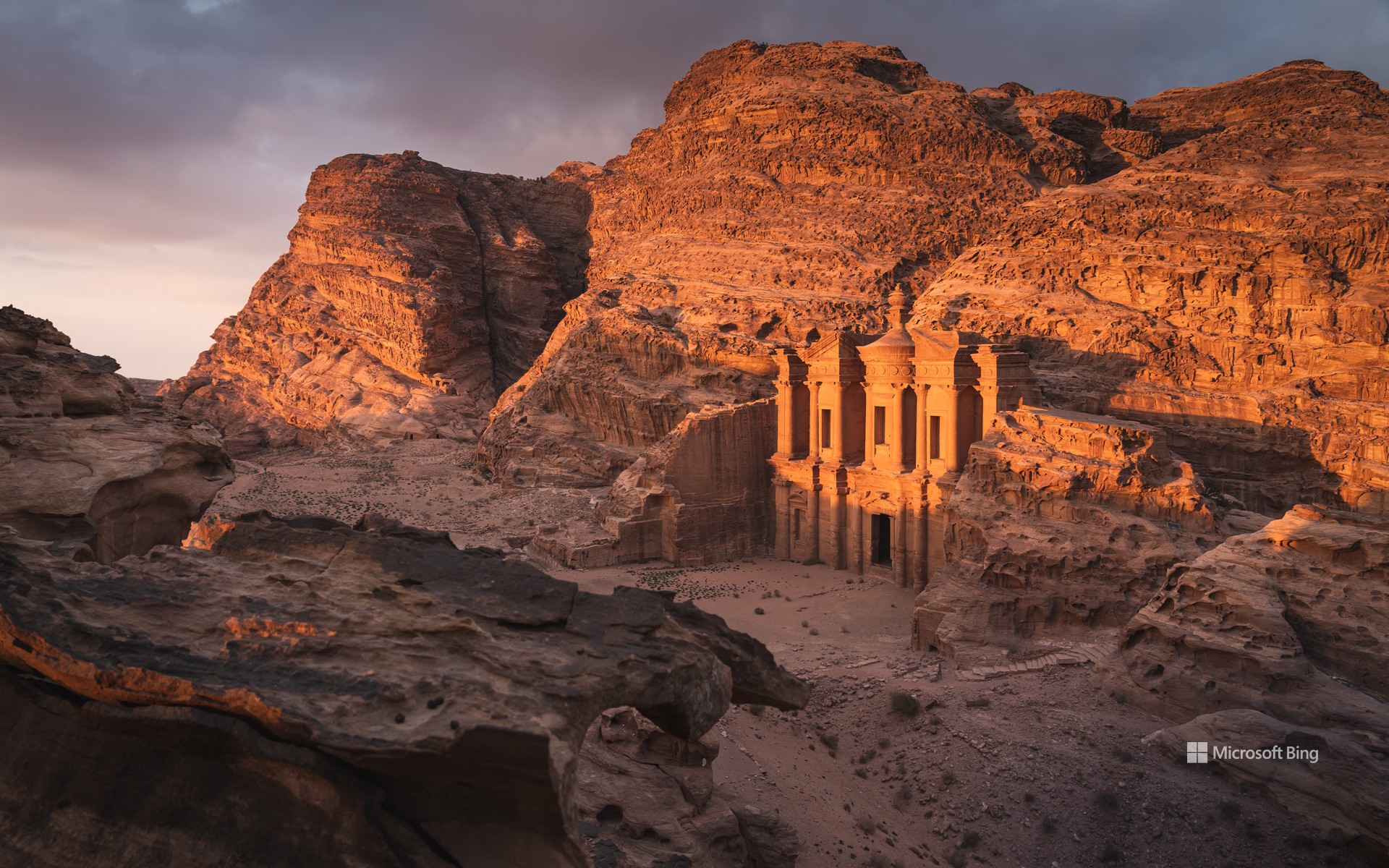代尔修道院,佩特拉,约旦 Ad-Deir, Petra, Jordan (© Punnawit Suwuttananun/Getty Images)

代尔修道院,佩特拉,约旦 Ad-Deir, Petra, Jordan (© Punnawit Suwuttananun/Getty Images)
在失落之城发现美 Finding beauty in the Lost City
代尔修道院,佩特拉,约旦
佩特拉及其皇冠上的明珠——代尔修道院,雕凿在玫瑰色的悬崖峭壁上,让人仿佛置身于电影《印第安纳琼斯》的探险场景中。这座古城坐落在约旦干旱沙漠地貌的中心,曾在公元前2世纪作为纳巴泰王国的首都而繁荣一时。它还是香料贸易的枢纽,连接着中国、埃及、希腊和印度等遥远地区。
今天图片中的代尔修道院可追溯到公元1世纪。其设计融合了希腊风格和美索不达米亚风格。尽管对该建筑的确切用途还存在争议,但普遍认为它在拜占庭时期被用作教堂。这座建筑高近150英尺,宽160英尺,巨大的外墙直接雕刻在砂岩悬崖上,展示了纳巴泰人巧夺天工的工艺和建筑艺术。要到达这座地标性建筑,需徒步攀登800级陡峭的石阶,在岩石地形中蜿蜒前行。尽管攀登的过程有些艰辛,但到达山顶后,你可以俯瞰佩特拉崎岖山谷的全貌,一切努力在此刻都会非常值得。
Ad-Deir, Petra, Jordan
Carved into rose-red cliffs, Petra and its crown jewel, Ad-Deir (The Monastery) feel like stepping into a real-life Indiana Jones adventure. Tucked in the heart of Jordan's arid desert landscapes, this ancient city once thrived as the capital of the Nabataean Kingdom in the 2nd century BCE. It was also a hub of the spice trade, connecting distant regions like China, Egypt, Greece, and India. The city was abandoned for around 500 years before being rediscovered in 1812, earning it the Lost City moniker.
Ad-Deir, seen in today's image, dates to the 1st century CE. Its design is characterized by a combination of Hellenistic and Mesopotamian influences. Although the exact purpose of the structure is debated, it's believed to have been used as a church during the Byzantine period. Standing nearly 150 feet tall and 160 feet wide, its massive facade is carved directly into the sandstone cliffs, showcasing the Nabataeans' ingenious craftsmanship and architecture. The journey to this landmark involves a steep hike up 800 stone steps, winding through rocky terrain. At the top, you're rewarded with panoramic views of the rugged Petra valley that make the climb more than worth it.
评论已关闭